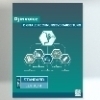Software Tips
What is process automation?
In the age of digitization, processes should be automated rather than manual. The automatic execution of processes is achieved through the use of software and device resources. For this purpose, the devices and programs require interfaces and options for the import and export of process signals as well as the acquisition, processing and output of process data.
What is RPA?
Robotic Process Automation (RPA) is the automation of business processes with the help of software robots. These digital robots work through repetitive processes in a structured and rule-based manner. They act on the graphical user interface and execute actions there directly. In principle, these actions and clicks are comparable to those of human users. Therefore, no special interfaces are required for the use of the software robots. The bots take over the tasks and roles of human users and interact with other software systems.
Advantages of RPA software
RPA software usually includes tools for recording and executing processes. During the introduction of the RPA software, the first processes to be automated are selected. In most cases, the respective process is also put to the test again and further optimized during this selection. Through automation, tasks are executed faster and thus usually more cost-effectively. Virtual employees (bots) are far more affordable than a human employee and are available around the clock. Among other things, automation also helps with documentation in the areas of compliance as well as with the security of systems in general.
- Process optimization within the scope of the introduction
- Increase process efficiency
- Easily scale RPA robots as workloads increase
- Automated documentation for higher security in compliance
- Cost savings in processes
Example processes for RPA
There are many different options for process automation using RPA. RPA can be used throughout the entire company. Example processes can be found in finance, human resources, and information technology, among others.
Finance
- Quotation
- Price comparison
- Risk and portfolio management
- Financial planning
- Financial analysis
- Invoice processing
- Invoicing
- Spending analysis
Human resources
- Payroll accounting
- HR Analyses
- Absence management
- Document management
- Travel costs and expenses
- Master data management
- Onboarding
IT
- Fault management
- Backups
- IT Support
- Access management
- Service request management
- Tests
Tips and question suggestions
More tips and question suggestions for evaluating RPA software:
- When selecting an RPA tool, pay attention to how the software recognizes and defines process steps and process components! For example, can user actions be recorded and analyzed?
- Ask the vendor about machine learning capabilities, e.g., for defining process rules. Can the RPA software learn independently, can processes be automated faster and more comfortably over time?
- Check the integration capability with your existing systems. Is the system compatible with the environment in which the tool will run?
- Ask the vendor about the services offered during and after the implementation of the RPA tool.
- Check if there is a clear design studio for bots! Does the tool include an easy way to set up RPA workflows based on recognized tasks? What is the scope of the programming work to be done? For example, are bot libraries available to support the design flow?
- Ask the vendor about bot maintenance and management features! When choosing, look for an intelligent command and control center for bots. This control center is used to monitor and manage the technical and functional performance of the bots. The center should automatically alert your experts when problems occur.
- When selecting an RPA tool, pay attention to usability! It should be easy to use and flexible enough to support basic automation processes. It should be user-friendly and easy to control. For example, are there roles for different user groups? Administrators, for example, could then have all programming functions at their disposal, while business analysts without programming knowledge can also use the tool.
- Ask the vendor about exception handling techniques! The RPA tool should have a well-designed exception handling procedure. Errors should be quickly detected during automation. If the errors detected do not require human attention, these errors should be able to be handled automatically.
 JOX is a tool for process automation. JOX controls IT processes, which usually have a very complex process control or include complex process chains. The automation can be done directly for already existing business processes. Also the automation can take place within projects, which the manufacturer carries out in co-operation with the customers. There is complete documentation and archiving of process-specific data. Easy access to all relevant information about the process flow is available...
JOX is a tool for process automation. JOX controls IT processes, which usually have a very complex process control or include complex process chains. The automation can be done directly for already existing business processes. Also the automation can take place within projects, which the manufacturer carries out in co-operation with the customers. There is complete documentation and archiving of process-specific data. Easy access to all relevant information about the process flow is available... Business processes can be optimized and automated in a future-proof manner with the Djinvoice software system. In particular, the collection, management and processing of master data is extremely cost-saving and efficient with this application and its diverse functions.
Business processes can be optimized and automated in a future-proof manner with the Djinvoice software system. In particular, the collection, management and processing of master data is extremely cost-saving and efficient with this application and its diverse functions. MR.KNOW - INVOICE ASSISTANT supports the capture and processing of incoming invoices, from automated document capture to the distribution, further processing and posting of relevant invoice data through to payment approval. After scanning, the data is compared with the order data in the ERP system and checked for plausibility, consistency and completeness. Reporting and monitoring for individual evaluations and compliance requirements are integrated into MR.KNOW - INVOICE ASSISTANT.
MR.KNOW - INVOICE ASSISTANT supports the capture and processing of incoming invoices, from automated document capture to the distribution, further processing and posting of relevant invoice data through to payment approval. After scanning, the data is compared with the order data in the ERP system and checked for plausibility, consistency and completeness. Reporting and monitoring for individual evaluations and compliance requirements are integrated into MR.KNOW - INVOICE ASSISTANT. Step into the future of process automation with MR.KNOW, your digital assistant for all business areas! Our modular solution offers you the flexibility from no-coding to professional environments to automate your processes quickly and efficiently. With MR.KNOW - PLATFORM and the integrated BPM middleware, you can integrate existing systems without programming and design your processes fully automatically. Experience how simple and complex applications for process automation become reality in no time at all!...
Step into the future of process automation with MR.KNOW, your digital assistant for all business areas! Our modular solution offers you the flexibility from no-coding to professional environments to automate your processes quickly and efficiently. With MR.KNOW - PLATFORM and the integrated BPM middleware, you can integrate existing systems without programming and design your processes fully automatically. Experience how simple and complex applications for process automation become reality in no time at all!... SO3 - Project Management for Engineering - networked, layout-based and interdisciplinary in real time! Bring project management and engineering together in one collaborative platform! Data management & communication, project progress & status management, Eplan interface, API interface and much more.
SO3 - Project Management for Engineering - networked, layout-based and interdisciplinary in real time! Bring project management and engineering together in one collaborative platform! Data management & communication, project progress & status management, Eplan interface, API interface and much more. Plan orders quickly and efficiently with GANTTPLAN: The planning tool creates cost-optimized planning results at the push of a button, which can be transferred to various ERP and MES systems via an integrated interface. Automated data exchange in real time creates the basis for extensive process automation.
Plan orders quickly and efficiently with GANTTPLAN: The planning tool creates cost-optimized planning results at the push of a button, which can be transferred to various ERP and MES systems via an integrated interface. Automated data exchange in real time creates the basis for extensive process automation. The PUBLIC ASSISTANT offers comprehensive support for public authorities and public administration in the digitization of processes and the implementation of OAA services.
The PUBLIC ASSISTANT offers comprehensive support for public authorities and public administration in the digitization of processes and the implementation of OAA services. AREAPLAN - Hall Planning Tool is a tool for efficient digital hall planning in 3D. Both spatial and temporal dimensions can be taken into account during planning. Place your components in the 3D environment using drag & drop. With the help of project and time filters, you always have a complete overview of the projects. Data can be updated automatically via an ERP connection.
AREAPLAN - Hall Planning Tool is a tool for efficient digital hall planning in 3D. Both spatial and temporal dimensions can be taken into account during planning. Place your components in the 3D environment using drag & drop. With the help of project and time filters, you always have a complete overview of the projects. Data can be updated automatically via an ERP connection. Intelligent Process Automation with MR.KNOW - BPM inspire Execution for intelligent process automation (iBPMS) the individual business application for every department becomes possible. Today, solutions no longer have to be programmed or developed beforehand in standard software. With model-based application creation, low code technology, native code generator and by using artificial intelligence, PM modules and modern digital assistants (MR.KNOW), every project manager can digitize processes across the board. Extension of Analytics, AI and RPA systems by level3.
Intelligent Process Automation with MR.KNOW - BPM inspire Execution for intelligent process automation (iBPMS) the individual business application for every department becomes possible. Today, solutions no longer have to be programmed or developed beforehand in standard software. With model-based application creation, low code technology, native code generator and by using artificial intelligence, PM modules and modern digital assistants (MR.KNOW), every project manager can digitize processes across the board. Extension of Analytics, AI and RPA systems by level3.